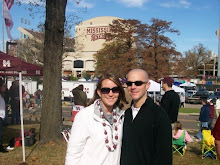Giblin, J. (1986). Milk: the fight for purity. New York, NY: Thomas Y. Crowell Junior Books.
(2 books)
Summary:
Milk: The Fight for Purity is a biography of milk. It begins in the Middle East about 10,000 years ago and describes the fight that took place to have milk that would not make people sick. In the 1700’s milk sellers delivered milk to people’s homes each day They carried the milk through the heat in open containers that collected all sorts of falling debris. There were high numbers of people who had tuberculosis, typhoid fever, cholera, and scarlet fever. Doctors and scientists thought that this was largely due to unsanitary milk. By 1839, infant deaths accounted for almost half of the deaths in New York City. This was also contributed to milk. In the 1850’s Louis Pasteur developed a process know as pasteurization. This process heated milk to a specific temperature for several minutes to kill harmful bacteria. The problem with pasteurization at this time was that it also ruined the sweet taste of milk. In the early 1900’s a more effective way of pasteurization was introduced called the flash method. This heated milk to 184 degrees for a few seconds and then it was cooled rapidly. This newer method killed the unsafe bacteria while still keeping the sweet taste.
This book also discusses the outbreaks that milk has caused and the various packaging that it has gone through. It discusses the fight that the American people have waged just to have milk that was sanitary.
Ages:
5th through 8th grade
Credibility of Author:
James Giblin read many books about public health and milk before writing this story. The author also included an acknowledgement in the front of the text for help in providing research materials and photographs.
National Standards that this book relates to:
Culture, Time, Continuity, and Change
Access Features:
This book contains a bibliography and an index of key words and photographs. There is also an acknowledgement from the author in the front of the book.
Description of the Illustrations:
The photographs in the book were taken from places like the library of Congress, the U.S Department of Agriculture, and the Metropolitan Museum of Art.
Related Texts:
Kalman, B. (1998). Hooray for dairy farming. New York, NY: Crabtree Publishing.
Gibbons, G. (1987). The milk makers. New York, NY: Aladdin Publishing.
My response to the book:
I really enjoyed reading this book. I had never known that milk had to go through such a fight just to be safe enough to drink. It was amazing to see how unsanitary the milking process used to be.
How I would use this book in my class:
This would be a good book to use parts of the text to talk about cows or dairy farming. I would nut use it in its entirety, but specific chapters could easily be related to younger content.
Tuesday, July 17, 2007
Subscribe to:
Post Comments (Atom)


4 comments:
I think this book would be better described as a specialized book rather than a biography (smile).
In addition to photos, primary source documents--prints (maybe lithographs)--that were published during the time were also used for illustrations. Weren't some advertisements too?
Oops, I forgot--one more thing--another book about things we take for granted. Maybe that's an inquiry theme--learning about "stuff" of our everyday lives that we don't even think about--bloomers, milk, the first day of school, candy (see other's blogs about everyday things)
I loved the way you presented this book in class. I don't think that it is one that I would have chosen by just looking at the cover. It's amazing how we really don't think about some to the things that we have in our everyday life. I will question milk now every time I look at it.
I think I'm thoroughly disgusted by this book, but I can't help but want to read it just to see how bad it actually is!
Post a Comment